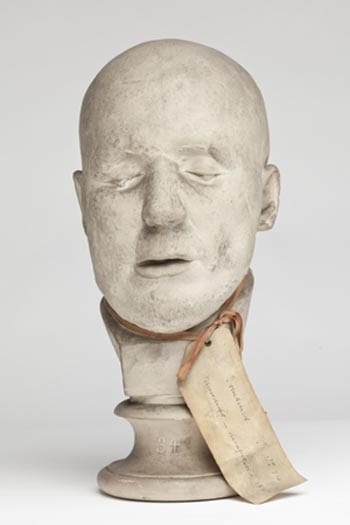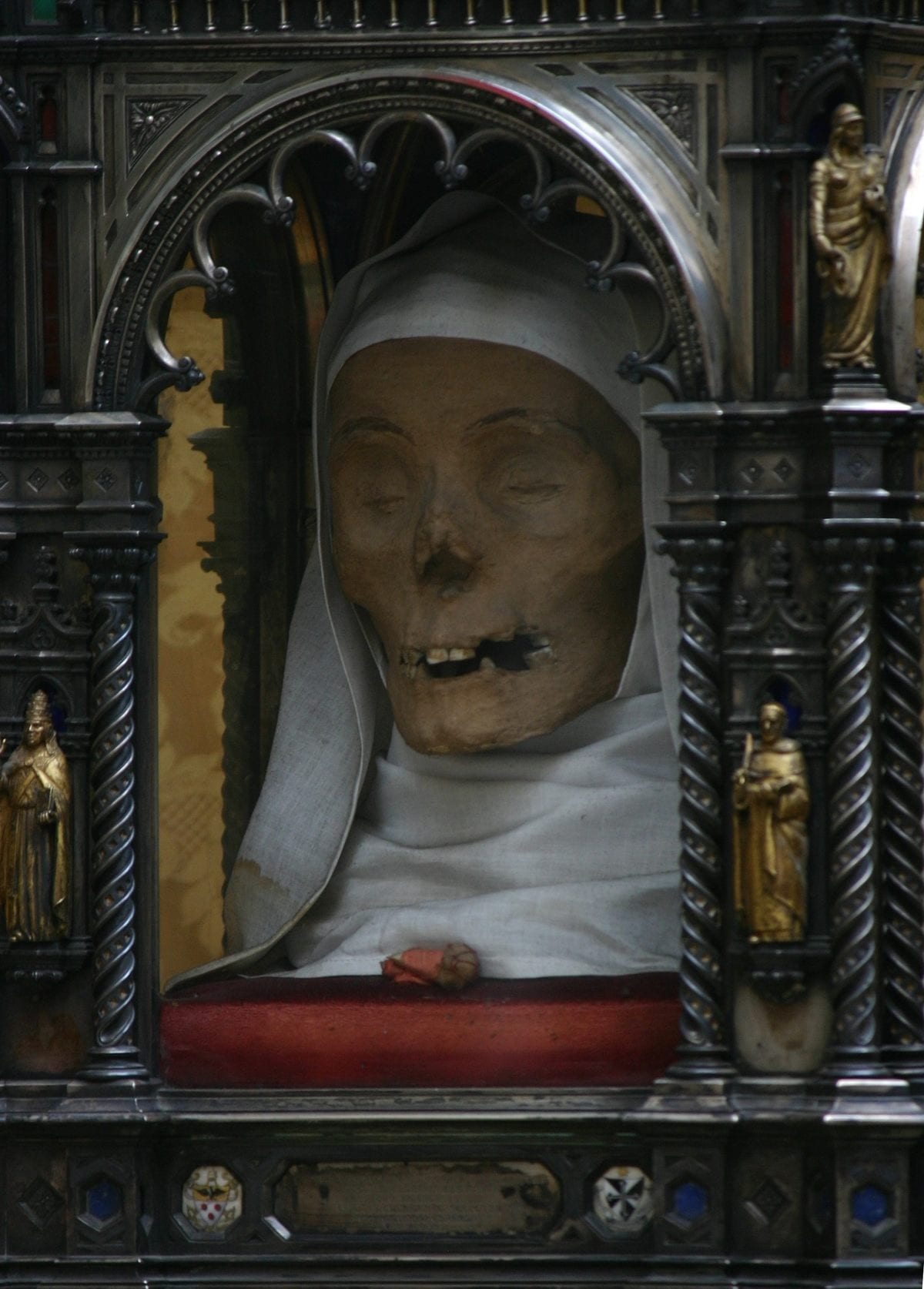[Last modified: March, 25 2019 11:44 AM]
Heads, miracles and science
‘But who knows the fate of his bones, or how often he is to be buried?’
Sir Thomas Browne, Urn Burial
We have looked at the things humans leave behind when they die, and we have looked at what happens to the bodies of dead animals. But we have not yet looked at the fate of the one thing we do not like to think about leaving behind – that is, our own body. While one can write a will and make sure their things end up in safe hands, one does not have as much control over ‘the fate of their bones’ after death. A body isn’t anyone’s property, and although idea of consent [link to glossary] is important today, until recently what happened to your body after death was out of your control.
Of all parts of the human body, the head was always considered to be the most important one, and of all body parts the most strange things have always happened to heads. This part of the exhibition looks at the fates of some (often notoriously) famous heads and why they have been parted with their bodies.
[1] The Head of St Catherine of Sienna
The mummified head of St Catherine of Sienna, Basilica San Domenico, Sienna
(photo: wikimedia)
St Catherine was a fourteenth-century nun, originally from Sienna. She lived most of her adult life in Rome, however, and during her lifetime performed many miracles. She died in Rome in 1380, aged 33, and was canonised a hundred years later. Because Rome refused to repatriate her body, a group of robbers from Sienna broke into her grave to steal the body but only managed to bring her disembodied head and thumb past the guards. They were put on display in two ornamental reliquaries next to each other in St. Dominic’s Basilica where they remain today.
[2] Charlemagne’s Skull

Reliquary of Charlemagne containing his skull
An even more ornate reliquary in Aachen holds the skull of the famous king of the Francs, Charles the Great. Although he was not exactly a saint, he was so greatly respected for making France into a mighty empire, promoting education and patronising art that his skull was considered to be as miraculous as any saint’s. And it was not just the skull: after the king’s death, almost all of his body was dismembered and put into separate boxes for the people’s admiration.
[3] Johannisschüssel
Unknown artist, Johannesschüssel (13th century, platter 16th century).
Painted wood. Naumburg, Cathedral Treasure Vault.
This is one of many medieval objects known as Johannesschüsseln – wooden sculptures representing the severed head of St John the Baptist. Because very few people would have access to the real head of the saint (to this day the location of the real skull, if it has indeed survived or been buried, is unknown), even sculptures like this were considered miraculous. They were taken out during holidays, carried around the city in religious processions and used as props in mystery plays. Despite the fact they were made of wood or, later, porcelain, these ‘replicas’ were treated with no less respect than actual remains of other saints.
[4] Cast of Sir Thomas Browne’s skull
Cast of cranium (a, b) and mandible (c) of Sir Thomas Browne, c. 1922
Collection: UCL Biological Anthropology Accession No.: PA233 + PA234
Material: Plaster Origin: England (Norwich?)
Almost 200 years after his death in 1682, a group of workmen accidentally damaged the coffin of Sir Thomas Browne, the famous seventeenth-century scientist, when they were digging a new grave in the floor of the church of St Peter Mancroft, Norwich. One of the most famous scientists of the seventeenth century (Browne died in 1682), he was the man responsible not only for promoting modern science but also for coining such terms as ‘electricity’, ‘suicide’ and ‘medical’, among many others. They took out his skull which ended up in the hands of the local chemist, who passed it on to the Norfolk and Norwich Hospital where it was measured, studied – and copied. Six known casts of it were made before it was finally returned to the grave in 1922. One of them has found its way to the Anthropology Collection of University College London where it remains today. Although we do not know precisely how or why, its arrival is probably connected to UCL’s darker past: the study of phrenology and eugenics.
[5] A Death Mask

Noel Head 34: Death mask of Carl Gottlob Irmscher of Freiburg
Like [4], this head was used in the study of eugenics. It is part of the Robert Noel Collection of Life and Death Masks at UCL – a collection of plaster casts of various people’s heads that was created for collecting and comparing measurements of the faces of people of various backgrounds. The scientists were particularly interested in using these measurements to identify what they described as ‘the criminal class’ and solve the problem of crime by isolating those people from society, if not worse – a way of thinking that justified the Holocaust. This cast was preserved because it represents the head of a man executed for murder.


